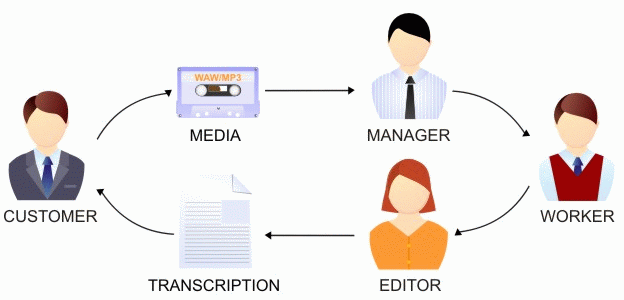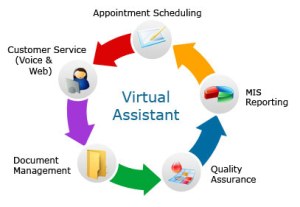You might be asking yourself how transcription service providers determine the price rate for their transcription services. Well not all audios, clients’ needs and subsequent instructions are the same. This means that the work done on the transcripts will not be the same. There are factors that determine how much a service provider will charge, below are the most common ones.

- Turnaround time.
Most transcription companies offer a turnaround time (TAT) of between 24 hours to 5 business days. For longer projects it can be anywhere from two weeks to months. However there are times when a client might need their work to be rushed, I’m talking in a matter of hours. For such cases you will find that the service provider will tend to charge a little extra for such a special request. The reason is that this work will be prioritized over other clients’ work. It does not mean that the pricing will be ridiculously much higher than the standard fee but it definitely won’t be priced the same.

- Quality of audio.
The quality of the audio can be determined in a number of ways.
- Background noise.
A clear audio is very easy to transcribe. You can hear what is being said clearly thereby reducing the chances of having inaudible parts in the transcript as well as the time taken to transcribe it. However audios that have background noise can be tricky to transcribe. This is because the background noise makes it difficult for the transcriptionist to hear what is being said. For example if you have two audios one recorded in a quiet room and another one recorded in a noisy restaurant, the first one will definitely be easy to work on as opposed to the latter. You have to try and hear what is being said amidst noises such as people talking and laughing, spoons hitting the plate, others clapping name it. Therefore you see more effort has to be put into this audio justifying the extra charge.
- Low volume.
Some audios may be clear but the volume of the speakers might be barely audible. Either the speaker was sitting too far from the recording device or they were simply speaking in a low tone. Take it from someone who has dealt with such audios in as much as the softwares for transcription, headphones and computers have options for increasing the sound some audios don’t get any better. The transcriptionists therefore have to use their hearing skills in order to work on the audio.
- Poor recording quality.
Some audios do not have background noise and neither are they low but they might have been poorly recorded making it hard for one to hear the speakers. This might result from using poor quality recording devices, not knowing how to operate the recording device or failure of the recording device to work properly. Other times the recorder was working just fine but maybe the speaker was not stationary. So if a speaker keeps moving around the sound being picked by the device will vary depending on whether they are close to it or not. The recorder might also be picking up on other sounds. For example the mic might be rubbing on other things while the speaker is in motion like jewelry or clothing. In other instances a recording might be done over the phone or on Skype and sometimes the connection is bad that you end up having static. Speakers get cut off or you have these buzzing noises drowning the speakers.

- Heavy technical terms.
Some topics around certain areas frequently have heavy terms that need researching. Some transcriptionists do specialize in certain fields like medical and legal fields so for them, chances are they are familiar with most of the terms in their field. For some however it means a lot of research. So be it scientific terms or legal terms this means extra work for the transcriptionist due to fact that they have to research the terms.

- Heavy accents.
Some speakers have really thick accents that are very pronounced in their speech. If you are not familiar with the accents sometimes you might even doubt that they are speaking English. Accents can range from American to British, Irish, Chinese, Indian, Canadian the list is endless. Some transcriptionists choose to stick to their lane and only work with accents they are good with.

- Time stamping.
Clients might require you to timestamp their transcripts. Time stamping frequency differs from client to client depending on the intended use. It can range from putting a time stamp every 30 minutes to putting a timestamp every 15 seconds. The point is the higher the frequency the higher the pay.

- Number of speakers.
An audio with one speaker is a slice of heaven for transcriptionists; an example is a doctor’s dictation. The more the number of speakers the higher you will pay for the services. The reason for this is that the more speakers there are the more likely you will have interruptions and talkovers making it harder for you to identify who spoke and what they said. Examples of audios with multiple speakers include focus groups, seminars, conferences et cetera.

- Verbatim versus clean transcripts.
A verbatim transcript is one where you are required to transcribe everything. By everything I mean everything, the stutters, false starts, uh-hums, ah-ahs, grunts, chuckles, repetitions, filler words and the likes. At times you are even required to mark the silence and other noises outside of the conversation, things falling, chair movements, car honking outside. This is just about the most complex transcribing can get. You cannot afford to miss a thing. Verbatim transcripts are typically required for deep qualitative analysis such as those done by speech disorder specialists.
A clean transcript on the other one means you only transcribe the important details. Ignore the outside sounds, false starts, stutters, filler words. Below are two examples of a clean and a verbatim transcript of the same audio.
Verbatim:
John Smith: I, I, I went to the mall to uh [car honking] do some shopping. I got like…I got a lot of stuff you know for my kids to play with.
Clean:
John Smith: I went to the mall to do some shopping. I got a lot of stuff for my kids to play with.
For clean transcripts some clients might require you to also correct the grammar. Say the speaker was not a native English speaker and said things like, “Last night I wake up in the middle of night and I feel hungry.” To, “Last night I woke up in the middle of the night and I was feeling hungry.” However such work calls for people with spot on knowledge of the English language. This is because in an attempt to correct the grammar you might end up changing the meaning of what was said. Remember the client wants you to correct the grammar but maintain the meaning.
As you can tell from the above the more the work put into the transcript the higher the charges. So depending on your needs you are able to decide how much work goes into the transcript consequently determining how much you’ll be charged.



















